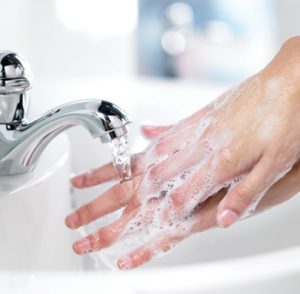In support of International Infection Prevention Week, Deb is raising awareness on how to protect patient’s from infection.

Around 300,000 patients a year acquire a healthcare-associated infection (HCAI) due to standards of care withing the NHS, but improving hand hygiene could be the solution.
A patient who is admitted into hospital has a 6.4% chance of contracting a hospital infection, and therefore performing effective hand hygiene is critical in reducing HCAIs in healthcare environments.
Deb is supporting International Infection Prevention Week (14-20 October) in order to raise awareness around infection prevention, which is hugely important in improving patient safety – the theme of this year being ‘Protecting Patients Everywhere’.
Five steps to patient safety
Here, the company shares five tips to improve hand hygiene compliance within Healthcare facilities.
1.Training
Healthcare workers must be provided with regular training on the importance of hand hygiene.
The World Health Organization (WHO) ‘Five Moments of Hand Hygiene‘ is the most effective way to help prevent the spread of infection and defines the five key moments when Healthcare workers should perform hand hygiene; before touching a patient, before clean/aseptic procedures, after body fluid exposure/risk, after touching a patient, and touching patient surroundings.
Following this procedure can deliver significant improvements in terms of hand hygiene compliance, helping embed good practice into our everyday working lives.
2. Invest in technology
To effectively measure hand hygiene, every hospital is required to implement a program in accordance with the WHO and set goals for compliance improvement.
Electronic monitoring technology works to reduce HCAIs whilst influencing staff behaviour change. It is the most meaningful and appropriate tool to support hand hygiene compliance and measurement.
3. Reminders
 Staff should be constantly reminded to maintain good hand hygiene. Placing posters in and around settings such as breakrooms, restrooms and other high-visibility locations, will reinforce this message throughout the workplace.
Staff should be constantly reminded to maintain good hand hygiene. Placing posters in and around settings such as breakrooms, restrooms and other high-visibility locations, will reinforce this message throughout the workplace.
4. Positive reinforcement
Creating a positive culture which encourages staff to perform good hygience when necessary can be created through the use of positive messages and providing feedback related to the subject.
5.Track and share data
Electronic monitoring systems provide powerful information that healthcare professionals can use to track real-time, accurate data to drive hand hygiene performance and behavioural change.
By tracking and sharing data, healthcare settings can ensure the highest practice standard in hand hygiene compliance measurement. In turn, this will help healthcare providers drive down the incidence rate of HCAIs within their establishment.
What makes us susceptible to burnout?
In this episode of the Safety & Health Podcast, ‘Burnout, stress and being human’, Heather Beach is joined by Stacy Thomson to discuss burnout, perfectionism and how to deal with burnout as an individual, as management and as an organisation.
We provide an insight on how to tackle burnout and why mental health is such a taboo subject, particularly in the workplace.


 Staff should be constantly reminded to maintain good hand hygiene. Placing posters in and around settings such as breakrooms, restrooms and other high-visibility locations, will reinforce this message throughout the workplace.
Staff should be constantly reminded to maintain good hand hygiene. Placing posters in and around settings such as breakrooms, restrooms and other high-visibility locations, will reinforce this message throughout the workplace.